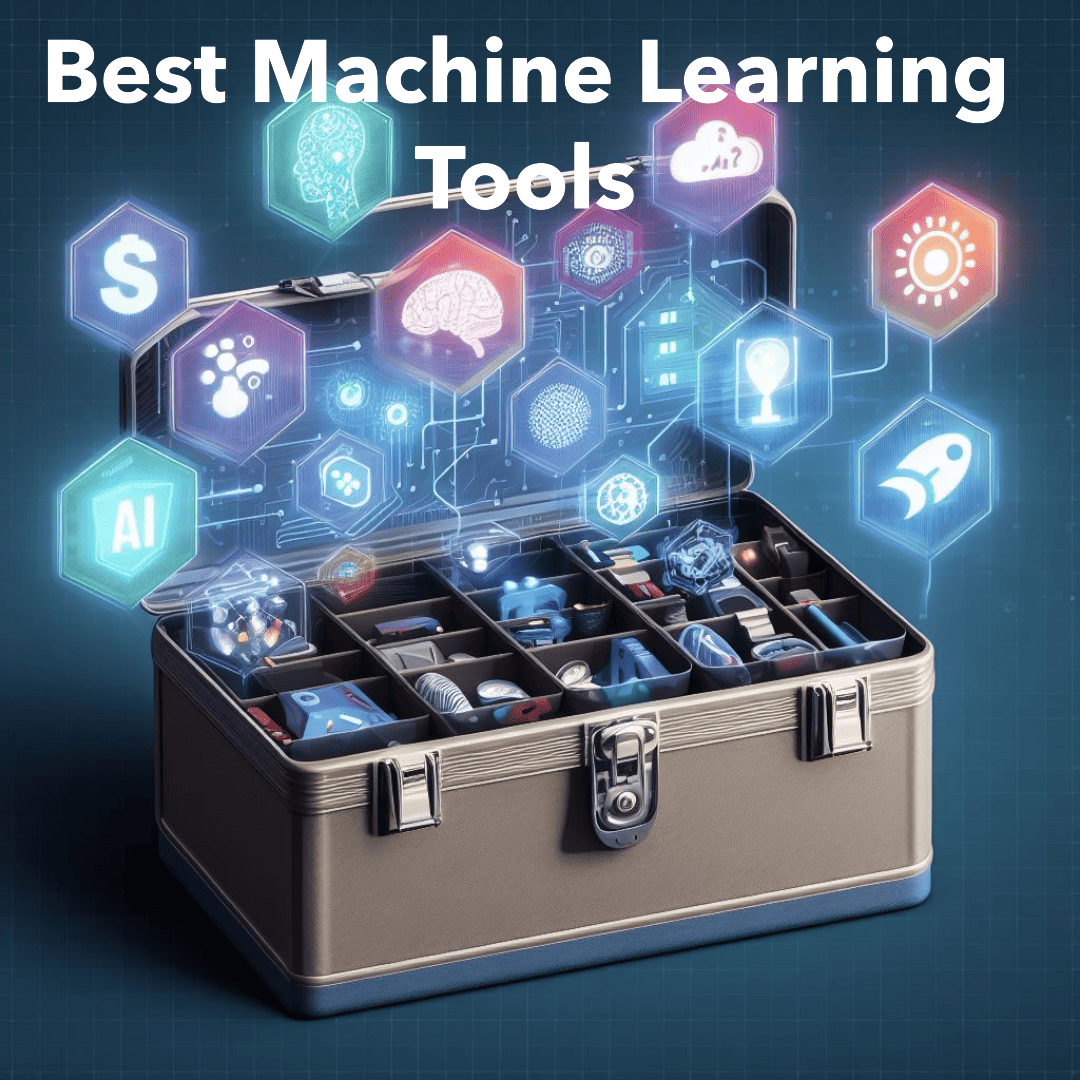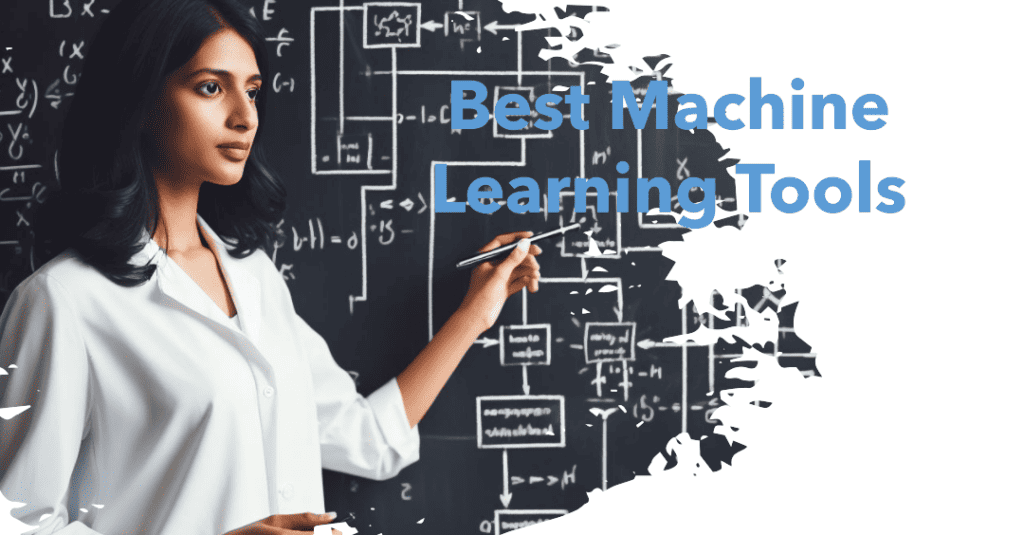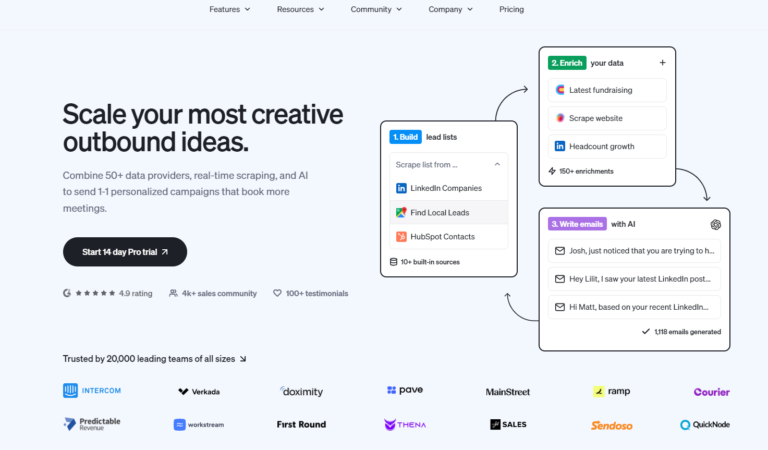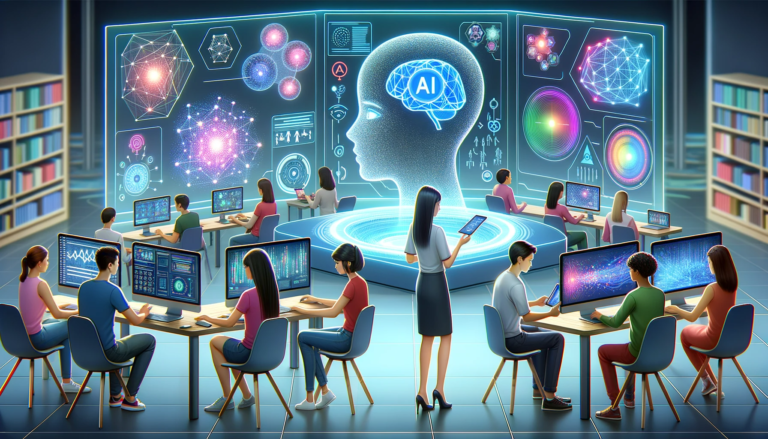
Are you ready to take your machine learning endeavors to the next level? Look no further than our comprehensive guide to the best machine learning tools. From powerful programming languages to cutting-edge frameworks, we’ve curated a list of the top tools that will enable you to seamlessly develop and deploy your machine learning models. Whether you’re a beginner or an experienced data scientist, these tools are guaranteed to enhance your productivity and help you unlock new possibilities in the world of artificial intelligence. So, buckle up and get ready to explore the best machine learning tools available today!

Supervised Learning Tools
Supervised learning is an essential aspect of machine learning, where models are trained using labeled data. In this category, several tools provide excellent support for building and training supervised learning models. Let’s explore some of the top tools available in the market.
Scikit-learn
Scikit-learn is a popular open-source library that offers a wide range of machine learning algorithms and tools for supervised learning tasks. It provides user-friendly interfaces for tasks like classification, regression, clustering, and dimensionality reduction. With its extensive documentation and active community support, scikit-learn is a fantastic choice for beginners and seasoned professionals alike.
TensorFlow
TensorFlow is another widely adopted machine learning framework with support for both supervised and unsupervised learning. Developed by Google, TensorFlow offers a flexible and comprehensive ecosystem for building and deploying machine learning models. With its extensive set of tools and libraries, TensorFlow empowers developers to create complex neural networks and deep learning models with ease.
Keras
Keras is a high-level neural networks API written in Python that works as a wrapper on top of low-level libraries like TensorFlow. It simplifies the process of building neural networks by offering a user-friendly and intuitive interface. Keras provides a wide range of pre-trained models and supports various backends, including TensorFlow, Theano, and Microsoft Cognitive Toolkit (CNTK). It is highly regarded for its ease of use and excellent support for deep learning tasks.
PyTorch
PyTorch is a powerful deep learning framework that has gained significant popularity in recent years. It offers a dynamic computational graph, making it easier to build and train neural networks compared to static graph architectures like TensorFlow. PyTorch provides a rich set of tools and libraries for supervised learning, and its intuitive interface enables quick prototyping of complex models. Its popularity within the deep learning community makes PyTorch a go-to choice for researchers and practitioners alike.
Microsoft Azure ML Studio
Microsoft Azure ML Studio is a cloud-based integrated development environment (IDE) that simplifies the process of building, deploying, and managing machine learning models. It offers a drag-and-drop interface, enabling users to create powerful supervised learning pipelines without the need for extensive programming knowledge. Azure ML Studio provides a wide range of pre-built modules and algorithms, making it an ideal choice for beginners and those looking for quick experimentation.
Unsupervised Learning Tools
While supervised learning is widely adopted, unsupervised learning plays a crucial role in discovering patterns and relationships in unlabeled data. Here are some of the top tools that excel in unsupervised learning tasks.
RapidMiner
RapidMiner is a comprehensive data science platform that offers a range of tools for unsupervised learning. With its intuitive GUI-based interface, non-technical users can easily explore, analyze, and model data without writing code. RapidMiner supports various unsupervised learning algorithms like clustering, association analysis, and anomaly detection, empowering users to gain valuable insights from their datasets.
Weka
Weka is a popular open-source machine learning library that provides a collection of algorithms and tools for data preprocessing, clustering, classification, and association analysis. It offers a user-friendly graphical interface, making it accessible to users with varying levels of technical expertise. Weka’s extensive collection of unsupervised learning algorithms makes it a great choice for those looking to explore and analyze their datasets without the need for extensive programming.
Apache Mahout
Apache Mahout is a scalable machine learning library that specializes in big data processing and analysis. It provides a set of distributed algorithms for unsupervised learning tasks like clustering and recommendation systems. Mahout is designed to work efficiently on large-scale datasets, making it an excellent choice for organizations dealing with big data. Its integration with Apache Hadoop and Apache Spark enables seamless execution of algorithms across distributed computing environments.
KNIME
KNIME is an open-source data analytics platform that allows users to create powerful workflows for data preprocessing, analysis, and modeling. It offers a wide range of tools and algorithms for unsupervised learning, including clustering, dimensionality reduction, and outlier detection. KNIME’s visual interface enables users to build complex workflows by simply dragging and dropping nodes, making it an ideal choice for users who prefer a visual approach to data analysis.
Deep Learning Frameworks
Deep learning has revolutionized the field of machine learning, enabling breakthroughs in domains like computer vision, natural language processing, and speech recognition. Several frameworks excel in building and training deep neural networks. Let’s explore some of the top deep learning frameworks.
TensorFlow
As mentioned earlier, TensorFlow is an excellent choice for deep learning tasks, thanks to its comprehensive ecosystem. It provides a high-level API called TensorFlow Keras that simplifies the process of building and training neural networks. TensorFlow’s versatility and extensive support for various backends make it a go-to framework for both researchers and industry professionals.
PyTorch
PyTorch, with its dynamic computational graph and intuitive interface, has gained significant popularity in the deep learning community. It offers a seamless experience for building and training complex deep neural networks. PyTorch’s flexibility, extensive library support, and active developer community make it a preferred choice for researchers who prioritize rapid experimentation and prototyping.
Keras
Keras, already mentioned in the supervised learning tools section, deserves a spot in the deep learning frameworks as well. Its simplicity and ease of use make Keras a popular choice among deep learning enthusiasts. Keras supports TensorFlow as its backend and offers a range of pre-trained models for tasks like image classification, object detection, and text generation. It serves as a fantastic entry point for those starting their journey into deep learning.
CNTK
CNTK, short for Microsoft Cognitive Toolkit, is a deep learning framework developed by Microsoft Research. It offers efficient training and inference on various platforms, including GPUs and CPUs. CNTK supports multiple programming languages like Python, C++, and C#, making it suitable for developers with different language preferences. It excels in tasks like speech recognition, image recognition, and natural language processing, making it a powerful deep learning tool.
Data Preprocessing Tools
Preparing the data before training a model is a critical step in the machine learning pipeline. Data preprocessing involves tasks like cleaning, transforming, and normalizing the data to ensure optimal performance of the models. Various tools specialize in data preprocessing tasks. Let’s take a look at some of them.
Pandas
Pandas is a powerful open-source library that provides data structures and functions for efficient data manipulation and analysis. It allows users to read, clean, transform, and merge datasets with ease. Pandas excels in tasks like handling missing data, filtering and sorting data, and performing aggregations. Its intuitive interface and extensive functionality make Pandas a must-have tool for data preprocessing.
NumPy
NumPy, short for Numerical Python, is a fundamental package for scientific computing in Python. It provides support for large, multi-dimensional arrays and matrices, along with a collection of mathematical functions. NumPy’s array manipulation and linear algebra capabilities make it a crucial tool for data preprocessing tasks like reshaping data, calculating statistics, and performing linear algebra computations.
SciPy
SciPy, built on top of NumPy, offers additional functionality for scientific computing. It provides a collection of modules for optimization, interpolation, signal processing, and more. SciPy’s integration with NumPy and Pandas makes it a valuable tool in the data preprocessing pipeline. Whether it’s filtering noisy data, fitting functions to data, or performing Fourier transforms, SciPy has you covered.
scikit-learn
scikit-learn, mentioned earlier in the supervised learning tools section, also plays a significant role in data preprocessing. It offers a broad range of utilities for tasks like data imputation, feature scaling, and categorical encoding. scikit-learn’s consistent API and extensive documentation make it an ideal choice for data preprocessing tasks across various domains and machine learning projects.
Data Visualization Tools
Data visualization is a powerful technique for analyzing and presenting data in a visually appealing manner. Visualization tools help in understanding patterns, trends, and relationships within the data. Let’s explore some of the top tools for data visualization.
Matplotlib
Matplotlib is a popular Python library for creating static, animated, and interactive visualizations. It provides a wide range of plots like line plots, scatter plots, bar plots, histograms, and more. Matplotlib’s versatility and customization options make it a go-to tool for creating publication-quality visualizations. Whether you need quick exploratory plots or detailed visualizations, Matplotlib has the flexibility to cater to your needs.
Seaborn
Seaborn is a statistical data visualization library built on top of Matplotlib. It offers a high-level interface for creating sophisticated and visually appealing statistical graphics. Seaborn comes with built-in themes and color palettes, making it easy to create aesthetically pleasing visualizations. With its support for advanced plots like violin plots, heatmaps, and pair plots, Seaborn is a valuable tool for data analysts and statisticians.
Plotly
Plotly is a powerful open-source library that provides interactive and web-based visualizations. It supports a wide range of plot types, including scatter plots, bar charts, 3D plots, and geographical maps. Plotly’s interactivity allows users to zoom, pan, and hover over data points for detailed exploration. It also offers online hosting for interactive plots, making it easy to share visualizations with others.
Tableau
Tableau is a popular data visualization tool used by data analysts and business intelligence professionals. It offers a user-friendly drag-and-drop interface that enables users to create interactive dashboards and reports. With its extensive collection of visualizations and powerful data exploration capabilities, Tableau allows users to gain valuable insights from complex datasets. It also supports collaboration and sharing, making it an excellent choice for teams working on data visualization projects.
D3.js
D3.js, short for Data-Driven Documents, is a JavaScript library for creating dynamic and interactive data visualizations in web browsers. It provides low-level building blocks for creating custom visualizations leveraging HTML, SVG, and CSS. D3.js provides an extensive set of tools for handling data, manipulating the DOM, and creating stunning visualizations. Its flexibility and rich feature set make D3.js a popular choice for those looking to create highly customized and interactive visualizations.
Model Evaluation Tools
Evaluating the performance of machine learning models is crucial for understanding their effectiveness and making informed decisions. Model evaluation tools provide metrics, visualization techniques, and diagnostic tools for assessing the quality of trained models. Let’s explore some of the top model evaluation tools.
scikit-learn
scikit-learn, a versatile machine learning library, also excels in model evaluation. It provides a wide range of evaluation metrics for various machine learning tasks like classification, regression, and clustering. scikit-learn’s API allows users to easily compute metrics like accuracy, precision, recall, F1-score, and more. With built-in functions for cross-validation and model selection, scikit-learn simplifies the process of evaluating the performance of machine learning models.
TensorBoard
TensorBoard is a web-based tool that comes bundled with TensorFlow. It provides a suite of visualization tools for understanding the training process and evaluating models. TensorBoard’s interactive visualizations allow users to monitor metrics, explore model architectures, and visualize high-dimensional data like embeddings and images. Whether it’s tracking training progress, comparing multiple models, or visualizing model performance over time, TensorBoard is a powerful tool for understanding and evaluating deep learning models.
Yellowbrick
Yellowbrick is a Python library that extends scikit-learn’s capabilities with visual tools for model evaluation. It offers a wide range of visualizers that help users analyze and understand model behavior across different datasets and tasks. Yellowbrick provides visualizations for feature analysis, classification evaluation, regression evaluation, clustering evaluation, and more. With its intuitive API and rich set of visualizations, Yellowbrick enhances the model evaluation process and helps in making informed decisions.
Shap
Shap is a Python library that provides model-agnostic explanations for machine learning models. It offers a unified framework for interpreting model predictions and understanding their drivers. Shap supports various explainability techniques like SHAP values, feature importance plots, and dependence plots. These techniques enable users to understand the impact of individual features on model predictions, leading to improved trust, interpretability, and fairness in machine learning models.
Eli5
Eli5, short for Explain Like I’m 5, is another Python library that provides model-agnostic explanations for machine learning models. It offers a simple interface for understanding feature importance by providing explanations as text or HTML visualizations. Eli5’s feature interpretation tools help in understanding how models make predictions and which features contribute the most to these predictions. With support for various machine learning frameworks like scikit-learn, xgboost, and LightGBM, Eli5 serves as a valuable tool for model evaluation and interpretability.
Natural Language Processing Tools
Natural Language Processing (NLP) involves the analysis and understanding of human language by machines. NLP tools enable developers and researchers to process, analyze, and derive insights from textual data. Let’s explore some of the top NLP tools available.
NLTK
NLTK (Natural Language Toolkit) is a popular Python library for NLP tasks. It provides a wide range of tools and resources for tasks like tokenization, stemming, part-of-speech tagging, named entity recognition, sentiment analysis, and more. NLTK’s extensive collection of corpora, lexical resources, and pre-trained models make it a valuable resource for NLP research and application development.
spaCy
spaCy is another powerful NLP library that emphasizes efficiency and production-readiness. It offers fast and accurate tokenization, part-of-speech tagging, entity recognition, and dependency parsing. spaCy’s pre-trained models and ease of use make it a popular choice for tasks like named entity recognition, sentiment analysis, and text classification. With its focus on performance, spaCy is well-suited for scenarios where processing large volumes of text is required.
Gensim
Gensim is a library for unsupervised topic modeling and natural language understanding. It provides efficient implementations of algorithms like Latent Semantic Analysis (LSA), Latent Dirichlet Allocation (LDA), and Word2Vec. Gensim’s easy-to-use API and support for large datasets make it a popular choice for tasks like topic modeling, document similarity, and document classification. Gensim’s emphasis on memory efficiency enables processing of large text corpora on limited hardware resources.
CoreNLP
CoreNLP is a natural language processing toolkit developed by Stanford University. It provides a wide range of linguistic analysis tools, including tokenization, part-of-speech tagging, sentence splitting, named entity recognition, sentiment analysis, and more. CoreNLP’s comprehensive set of tools and models makes it suitable for a wide range of NLP tasks. It also offers support for multiple programming languages like Java, Python, and Ruby, making it accessible to developers in various environments.
Reinforcement Learning Tools
Reinforcement learning involves training models to make decisions based on trial and error and feedback signals. It enables machines to learn from interactions with an environment to maximize rewards. Let’s explore some of the top tools for reinforcement learning.
OpenAI Gym
OpenAI Gym is a popular open-source library for developing and comparing reinforcement learning algorithms. It provides a wide range of environments, including classic control tasks, board games, robotics simulations, and more. OpenAI Gym offers an easy-to-use API for interacting with environments, allowing developers to quickly prototype and test their reinforcement learning algorithms.
Baselines
Baselines is a reinforcement learning library built on top of OpenAI Gym. Developed by OpenAI, Baselines provides a collection of state-of-the-art reinforcement learning algorithms like DQN, PPO, and A2C. It offers highly optimized implementations of these algorithms, making them easy to use and efficient. Baselines’ integration with OpenAI Gym and its focus on performance make it an excellent choice for researchers and practitioners interested in reinforcement learning.
TensorForce
TensorForce is another reinforcement learning library that offers a modular and flexible approach to building and training models. It provides a wide range of pre-implemented algorithms and environments, making it easy to get started with reinforcement learning. TensorForce’s support for custom environments and its focus on modularity and extensibility make it a powerful tool for researchers and developers looking for flexibility in their reinforcement learning projects.
Automated Machine Learning Tools
Automated Machine Learning (AutoML) aims to automate the process of building and optimizing machine learning models, making it accessible to users with limited machine learning expertise. Let’s explore some of the top AutoML tools available.
H2O.ai
H2O is an open-source platform that provides a suite of AutoML tools and algorithms. It offers automated feature engineering, model selection, hyperparameter tuning, and ensemble methods to build powerful machine learning models. H2O’s intuitive interface and support for various algorithms make it a user-friendly AutoML tool suitable for both beginners and experienced data scientists.
AutoML
AutoML, developed by the Google Brain team, is an open-source library that automates the process of building, training, and deploying machine learning models. It provides a unified interface for various AutoML tasks like tabular data classification, image classification, and text classification. AutoML’s integration with TensorFlow allows users to leverage its powerful deep learning capabilities for automating complex machine learning workflows.
TPOT
TPOT (Tree-based Pipeline Optimization Tool) is an open-source library that automates the process of building and optimizing machine learning pipelines. It uses genetic programming to search for the best combination of preprocessing steps and machine learning algorithms for a given dataset. TPOT’s automated pipeline generation and hyperparameter tuning capabilities make it a popular choice for users looking for an efficient way to build and optimize machine learning models.
MLbox
MLbox is an open-source AutoML library that offers a range of automated features, including data preprocessing, feature engineering, feature selection, and model selection. MLbox’s automated pipeline creation and hyperparameter optimization capabilities make it easy to build high-performing machine learning models with minimal effort. Its integration with scikit-learn and XGBoost enables users to leverage state-of-the-art algorithms for automated machine learning workflows.
Model Deployment Tools
Once the machine learning models have been trained and evaluated, the next step is to deploy them into production environments. Model deployment tools help in serving models and making predictions in real-time. Let’s explore some of the top model deployment tools available.
TensorFlow Serving
TensorFlow Serving is a flexible and efficient system for serving TensorFlow models in production environments. It provides a core service that takes care of model loading, model versioning, and model serving. TensorFlow Serving supports various deployment scenarios and can handle high-throughput prediction requests. Its integration with TensorFlow makes it an ideal choice for serving trained models built using the TensorFlow framework.
TorchServe
TorchServe is a model serving library for PyTorch models. Developed by the PyTorch team, it provides an easy-to-use command-line interface and a lightweight container to serve models in production. TorchServe supports various deployment scenarios, including high-performance inference, multi-model serving, and model versioning. Its integration with PyTorch and its focus on ease of use make it a valuable tool for serving PyTorch models.
BentoML
BentoML is an open-source framework for packaging and deploying models as containerized microservices. It offers a unified interface for defining, training, and serving models using popular machine learning frameworks like TensorFlow, PyTorch, and scikit-learn. BentoML’s support for various deployment scenarios, including serverless deployments, makes it easy to integrate machine learning models into existing workflows and infrastructure.
Heroku
Heroku is a cloud platform that offers a simple and convenient way to deploy machine learning models. It supports various programming languages and frameworks, including Python and popular machine learning libraries. Heroku’s focus on ease of use and its seamless integration with Git make it a popular choice for deploying small to medium-sized machine learning models. With its scalable infrastructure and support for various deployment scenarios, Heroku makes model deployment hassle-free.
In conclusion, the field of machine learning is enriched by a wide range of tools and frameworks that cater to different stages of the machine learning pipeline. Whether you are looking to build, train, evaluate, or deploy machine learning models, there are several top-notch tools available to assist you. From scikit-learn and TensorFlow to tools like NLTK and BentoML, each tool offers unique features and capabilities to enhance your machine learning projects. Remember to explore these tools and find the ones that best suit your specific requirements and preferences. Happy machine learning!
FAQs:
1. What are the key considerations when choosing a deep learning framework for a specific project?
Choosing a deep learning framework involves considering factors like project requirements, familiarity with the framework, community support, and the framework’s suitability for the task at hand. It’s essential to assess which framework aligns best with your project’s goals and your team’s expertise.
2. Can I switch between deep learning frameworks in the middle of a project, or should I stick with one framework throughout?
While it’s possible to switch between frameworks, it’s generally advisable to stick with one throughout a project to maintain consistency. Switching may require rewriting code and adapting to different APIs. However, if a specific framework better suits your project’s evolving needs, a transition may be justified with careful planning.
3. How can I optimize the performance of deep learning models using these frameworks?
Optimizing model performance involves techniques like hyperparameter tuning, proper data preprocessing, and selecting the right architecture. Each framework provides tools for fine-tuning models. Additionally, leveraging hardware accelerators such as GPUs and TPUs can significantly speed up training and inference.
4. What are some challenges in using deep learning frameworks, and how can I overcome them?
Common challenges include handling large datasets, addressing overfitting, and optimizing models for production. To overcome these challenges, consider data augmentation techniques, regularization methods, and deploying models using dedicated serving tools like TensorFlow Serving or TorchServe.
5. Are there any emerging deep learning frameworks or trends that I should be aware of?
The field of deep learning is continually evolving. Keep an eye on emerging frameworks and trends, such as ONNX, JAX, and hardware-specific libraries like ROCm for AMD GPUs. Trends like federated learning, responsible AI, and model interpretability are also gaining prominence in the AI community. Staying informed about these developments can give you a competitive edge in your AI projects.






